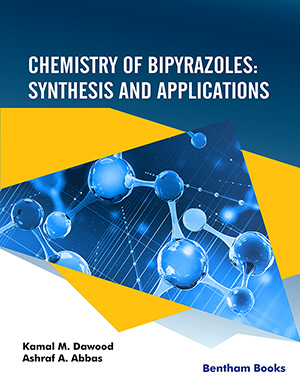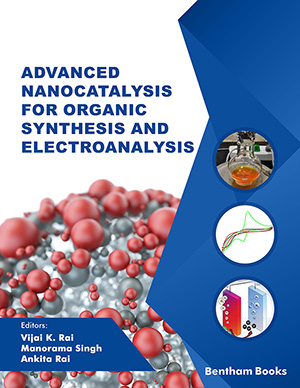
Abstract
Magnetic nanoparticles (MNPs), in particular those based on iron oxides, have attracted a lot of attention during the last years for their applications in nanomedicine. This is due to their unique physicochemical properties, such as good biocompatibility, their size in the nanoscale and their superparamagnetism, making them useful for drug delivery, MRI, magnetic targeting and magnetic fluid hyperthermia. Due to these promising properties, important work has also been taking place on MNPs in combination with proteins. MNPs can be used to improve the in vivo properties of therapeutic proteins, increasing their circulation half-lives. On the other hand, proteins are very important candidates to improve the in vivo fate of MNPs, as they can be used for their site-specific active targeting, as well as the enhancement of their colloidal stability in physiological conditions. In this review, we describe the most common preparation methods of protein modified MNPs used for biomedical applications and highlight the most promising ones for each purpose.
Keywords: Magnetic nanoparticles, iron oxide, proteins, therapeutics, active targeting, coating, biomedical applications.
Current Organic Chemistry
Title:Protein-Modified Magnetic Nanoparticles for Biomedical Applications
Volume: 20 Issue: 11
Author(s): Marina Talelli, Antonio Aires and Marzia Marciello
Affiliation:
Keywords: Magnetic nanoparticles, iron oxide, proteins, therapeutics, active targeting, coating, biomedical applications.
Abstract: Magnetic nanoparticles (MNPs), in particular those based on iron oxides, have attracted a lot of attention during the last years for their applications in nanomedicine. This is due to their unique physicochemical properties, such as good biocompatibility, their size in the nanoscale and their superparamagnetism, making them useful for drug delivery, MRI, magnetic targeting and magnetic fluid hyperthermia. Due to these promising properties, important work has also been taking place on MNPs in combination with proteins. MNPs can be used to improve the in vivo properties of therapeutic proteins, increasing their circulation half-lives. On the other hand, proteins are very important candidates to improve the in vivo fate of MNPs, as they can be used for their site-specific active targeting, as well as the enhancement of their colloidal stability in physiological conditions. In this review, we describe the most common preparation methods of protein modified MNPs used for biomedical applications and highlight the most promising ones for each purpose.
Export Options
About this article
Cite this article as:
Talelli Marina, Aires Antonio and Marciello Marzia, Protein-Modified Magnetic Nanoparticles for Biomedical Applications, Current Organic Chemistry 2016; 20 (11) . https://dx.doi.org/10.2174/1385272819666150810221009
| DOI https://dx.doi.org/10.2174/1385272819666150810221009 |
Print ISSN 1385-2728 |
| Publisher Name Bentham Science Publisher |
Online ISSN 1875-5348 |
Call for Papers in Thematic Issues
Advances of Heterocyclic Chemistry with Pesticide Activity
Global food safety and security will continue to be a global concern for the next 50 years and beyond. Plant diseases have had a significant impact on food safety and security throughout the entire food chain, from primary production to consumption. While conventional chemical pesticides have been traditionally used for ...read more
Carbohydrates conversion in biofuels and bioproducts
Biomass pretreatment, hydrolysis, and saccharification of carbohydrates, and sugars bioconversion in biofuels and bioproducts within a biorefinery framework. Carbohydrates derived from woody biomass, agricultural wastes, algae, sewage sludge, or any other lignocellulosic feedstock are included in this issue. Simulation, techno-economic analysis, and life cycle analysis of a biorefinery process are ...read more
Catalytic C-H bond activation as a tool for functionalization of heterocycles
The major topic is the functionalization of heterocycles through catalyzed C-H bond activation. The strategies based on C-H activation not only provide straightforward formation of C-C or C-X bonds but, more importantly, allow for the avoidance of pre-functionalization of one or two of the cross-coupling partners. The beneficial impact of ...read more
Cutting-edge technology for the development of electrochemical sensors
Electrochemistry based point of care diagnostics is a powerful tool which can revolutionize the current concept of personalize health care industry. There have been several efforts to amalgamate cutting edge technologies (nanotechnology, surface technology, anti-biofouling strategies) while developing assays. The success of each electrochemical sensor is very dependable upon how ...read more
Related Journals
 45
45 1
1 1
1
- Author Guidelines
- Graphical Abstracts
- Fabricating and Stating False Information
- Research Misconduct
- Post Publication Discussions and Corrections
- Publishing Ethics and Rectitude
- Increase Visibility of Your Article
- Archiving Policies
- Peer Review Workflow
- Order Your Article Before Print
- Promote Your Article
- Manuscript Transfer Facility
- Editorial Policies
- Allegations from Whistleblowers
- Announcements
Related Articles
-
Neuropathic Pain and Lung Delivery of Nanoparticulate Drugs: An Emerging Novel Therapeutic Strategy
CNS & Neurological Disorders - Drug Targets Therapeutic Challenges in Neuroendocrine Tumors
Anti-Cancer Agents in Medicinal Chemistry Radiogenetic Therapy: Strategies to Overcome Tumor Resistance
Current Pharmaceutical Design Chemoradiation for Glioblastoma
Current Drug Therapy Meet Our Editorial Board Member
Current Cancer Therapy Reviews Anti-Angiogenic Peptides for Cancer Therapeutics
Current Pharmaceutical Biotechnology Chemotherapy and Delivery in the Treatment of Primary Brain Tumors
Current Clinical Pharmacology Small Heat Shock Proteins (sHSPs) As Potential Drug Targets
Current Pharmaceutical Biotechnology Radioprotective Gene Therapy
Current Gene Therapy Morphofunctional Aspects of the Blood-Brain Barrier
Current Drug Metabolism Aurora-B Kinase Inhibitors for Cancer Chemotherapy
Mini-Reviews in Medicinal Chemistry Selective Modulator of Cannabinoid Receptor Type 2 Reduces Memory Impairment and Infarct Size During Cerebral Hypoperfusion and Vascular Dementia
Current Neurovascular Research Mitochondrial Physiology and Toxicity (Mitotoxicity); Importance for the Immune System, Programmed Cell Death and Cancer
Current Medicinal Chemistry - Anti-Inflammatory & Anti-Allergy Agents Somatostatin, Somatostatin Analogs and Somatostatin Receptor Dynamics in the Biology of Cancer Progression
Current Molecular Medicine Myogenic Potential of Mesenchymal Stem Cells - the Case of Adhesive Fraction of Human Umbilical Cord Blood Cells
Current Stem Cell Research & Therapy Retinoid Related Molecules an Emerging Class of Apoptotic Agents with Promising Therapeutic Potential in Oncology: Pharmacological Activity and Mechanisms of Action
Current Pharmaceutical Design Tip60: Main Functions and Its Inhibitors
Mini-Reviews in Medicinal Chemistry MicroRNAs in Prostate Cancer Following Radiotherapy: Towards Predicting Response to Radiation Treatment
Current Medicinal Chemistry Immunotherapy of Human Cancers Using Gene Modified T Lymphocytes
Current Gene Therapy Short Commentary on “Targeting Long Non-Coding RNAs in Nervous System Cancers: New Insights in Prognosis, Diagnosis, and Therapy”
Current Medicinal Chemistry























